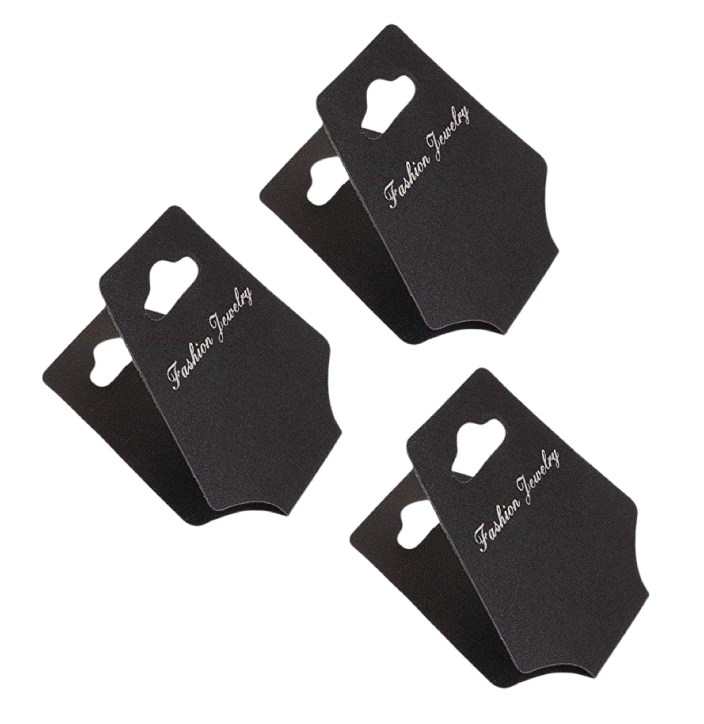Creating Custom Jewelry Logo Tags is an essential step for any jewelry business looking to establish a unique brand identity. A well-designed tag not only showcases your logo but also enhances the overall appeal of your products. This guide will walk you through the entire process of creating custom jewelry logo tags, from concept to execution.
Understanding the Importance of Logo Tags
Logo tags serve multiple purposes. First, they enhance brand recognition by displaying your logo prominently. Second, they provide essential information about your jewelry, such as materials used, care instructions, and pricing. Lastly, a well-crafted tag adds a professional touch to your jewelry, making it more appealing to customers.
Defining Your Brand Identity
Before diving into the design process, take some time to define your brand identity. Think about what your jewelry represents and how you want customers to perceive it. This clarity will guide your design choices and ensure that your logo tag aligns with your overall branding.
- Analyze Your Target Audience:
Understanding who your customers are can significantly influence your design. Different demographics respond to different styles, colors, and themes.
- Establish Your Unique Selling Proposition:
Consider what sets your jewelry apart from competitors. Whether it’s craftsmanship, materials, or a specific theme, your USP should be reflected in your logo tag design.
Designing Your Logo
Creating an impactful logo is a crucial step in the process. A good logo should be simple yet memorable, conveying the essence of your brand.
- Choose Your Design Elements Wisely:
Colors, fonts, and shapes all play a role in your logo’s effectiveness. Select elements that reflect your brand identity and resonate with your target audience.
- Use Professional Design Software or Services:
While it’s possible to create a logo using free online tools, investing in professional design software or hiring a graphic designer can yield better results. Quality matters, especially for branding.
- Seek Feedback:
Once you have a draft of your logo, share it with trusted individuals or focus groups. Gathering feedback helps identify any potential issues and ensures that your logo communicates the right message.
Selecting the Right Materials
Once you have your logo finalized, the next step is to select the appropriate materials for your tags. The material you choose can affect the durability, appearance, and overall feel of the tag.
- Paper Tags:
These are cost-effective and can be printed in various finishes. Consider using high-quality cardstock for a more premium look.
- Plastic Tags:
Durable and resistant to water, plastic tags can be ideal for outdoor or fashion jewelry. They can also be printed in vibrant colors.
- Metal Tags:
For a luxurious touch, consider using metal tags. Options like brass or aluminum can add a unique elegance to your jewelry pieces.
Choosing the Size and Shape of Your Tags
The size and shape of your tags are crucial for visibility and functionality. Think about how the tags will be attached to your jewelry and where they will be placed.
- Standard Shapes:
Circular, rectangular, and square tags are common shapes that work well for most jewelry types. Choose a shape that complements your logo design.
- Custom Shapes:
If you want to stand out, consider custom shapes that reflect your brand. For instance, a tag shaped like a gemstone or a piece of jewelry can create a memorable impression.
- Size Considerations:
Ensure the tag is large enough to display your logo and any necessary information, yet small enough to remain unobtrusive. Aim for a balanced design.
Printing Your Tags
After finalizing the design, it’s time to print your tags. Choosing the right printing method can make a significant difference in the final product.
- Digital Printing:
This method is great for small runs and allows for vibrant colors and intricate designs. It’s also cost-effective for startups.
- Offset Printing:
For larger quantities, offset printing may be more economical. This method provides high-quality prints and is suitable for more complex designs.
- Screen Printing:
If you’re using plastic or metal tags, screen printing can be an excellent option. It offers durability and can withstand wear and tear.
Adding Essential Information
Including essential information on your custom jewelry logo tags is crucial. This information can enhance the customer’s experience and help them understand your product better.
- Care Instructions:
Providing care instructions on the tag informs customers how to maintain their jewelry, ensuring it lasts longer.
- Material Details:
Listing the materials used in your jewelry can instill confidence in the quality of your products.
- Price and SKU Information:
If you sell directly to consumers, including price tags can facilitate the shopping experience. SKU information helps in inventory management.
Attaching the Tags
Now that your tags are printed, think about how to attach them to your jewelry. The method of attachment can vary depending on the type of jewelry and tag material.
- String or Ribbon:
For lightweight pieces, consider using string or ribbon to attach the tag. This method adds a decorative element while remaining functional.
- Metal Clips:
For more durable tags, metal clips can securely fasten the tag to your jewelry without compromising the overall design.
- Adhesive:
For certain types of jewelry, using adhesive tags may be appropriate. Ensure that the adhesive is strong enough to withstand handling.
Conclusion
Creating custom jewelry logo tags is a thoughtful process that requires careful consideration at every stage. From defining your brand identity to designing the tag and selecting materials, each step plays a crucial role in the final product. By following this guide, you can create logo tags that enhance your brand recognition, attract customers, and ultimately contribute to your business’s success. Packaging Printing techniques have evolved, offering businesses various options to showcase their products effectively.



